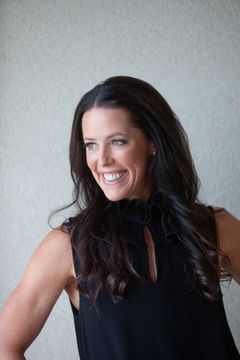If 2020 taught us anything, it’s that the future is not guaranteed. Even the most tenured and successful health and exercise professionals faced significant threats to their livelihoods as their typical pathways for servicing clients became obsolete for extended periods. While some trainers and group fitness instructors had already started to explore new ways to get people moving beyond the tried-and-true in-person workouts, many were caught off guard. The lesson we learned (hopefully!) is that future-proofing your career is a now thing, not a then thing. In other words, you can't wait until getting creative, thinking outside the box, or diversifying your offerings is necessary. Instead, you must get curious early and often to meet current clients' demands, as well as those who don't know they need you yet.
Future-proofing your career involves taking the extra steps to prepare yourself for a changing world. It requires you to keep an eye out for what's happening beyond your place of business, local community and even your industry. You must prioritize questioning the current and experimenting with options. While it's a challenge to protect the fortress (i.e., your existing business) and simultaneously forage new lands (i.e., new opportunities), when you learn to manage both consistently and preemptively, the upside is sustainable growth and the ability to impact even more lives.
Here are three tips to get you pointed in the right direction:
Tip 1: Adopt a New Mindset
Future-proofing requires a fundamental shift in thinking.
First, you must believe that change is inevitable. Considering the eventuality of change will keep you on your toes. The minute you stop thinking the path you're on now is the one you will always be traveling or how you currently serve your clients is the best way, you will proactively set aside time to try new things.
Next, you must subscribe to the notion that growth is imperative. You will choose to learn every day, both formally and informally. No longer will you wait to get all your continuing educations credits (CECs) at a conference, or as your renewal deadline is fast approaching. Instead, you will create rituals around expanding your horizons by reading, practicing, networking and experimenting.
Finally, you will need to embrace improvisation and innovation. Instead of following in another professional's footsteps, you will watch for “clues” from those you respect and admire but use them as a jumping-off point rather than an exact path to follow. You will try new things, knowing that they will not always work out. Redefining failure as a detour while moving toward a new and improved future will be your secret weapon.
The three tenets above will lead you to take control of your career and, likewise, responsibility for your own success. Nothing will happen to you; instead, you will make things happen.
Tip 2: Keep a Clear and Open Career Path
Once you've adopted a new mindset, being open to new options will be much easier. Future-proofing necessitates always being on the lookout for growing both vertically and horizontally in your career. Vertically includes possibilities for doing more of the same, adding services to a target market or taking on more opportunities adjacent to what you're currently doing. Horizontally means repurposing what you do for a new audience inside or outside of your current industry.
Start by scanning the fitness “environment,” which includes changes and trends occurring in your profession and the industry. Be sure to use resources from inside your current occupation and industry, as well as many that are outside. In other words, expand your ongoing reading and research from the typical industry publications and personalities and include reputable thought leaders, business outlets and more to round out your vantage point. You'll also want to scan general economic news.
Be sure you're thinking globally, not just locally or regionally, for the best outcomes. While you may have no interest in relocating, understanding what is happening beyond your immediate area in fitness, business and the economy can prompt ideas for leapfrogging your current situation.
You'll want to focus on growing your professional network. Develop a daily habit of identifying new connections that would be worthwhile, reaching out to start conversations and intentionally fostering current relationships. Once again, we encourage you to think beyond connecting with those that closely resemble your current path. Consider finding mentors and role models from other industries, as well.
Tip 3: Expand and Hone Your Skillset
Finally, to prepare for whatever lies ahead, you'll want to expand and hone your skillset. As in the case of the first tip, this requires you always to be learning. You'll want to divide your learning between your current area of expertise and soft skills.
Within your area of expertise, commit to learning more about your chosen target market, as well as the tools and methods that are most beneficial. You should also consider adding behavior change to your arsenal if you have not yet done so, as we're increasingly recognizing the importance of this component. Soft skills such as leadership, communication, innovation and stress management are not only beneficial to the clients you serve but will serve you well.
Be sure you make a plan for your learning, as well as the application of your newfound skills. Aim to take on positions for organizations that invest in your development, not just learning how to do the job you were hired for but also transferrable skills that will make you even more employable in the future (good organizations will prioritize this!). If you are self-employed, surround yourself with like-minded individuals who prioritize learning and hold one another accountable for continuing to upskill.
One last thing: Developing resilience is a must when learning to future-proof. While implementing the tips outlined above will help bring opportunities, you will still encounter disruption and setbacks. Resilience is the ability to recover quickly from difficulties; it's a sort of toughness needed to “weather the storm.” Embracing the tips above will put many tools in your toolbox, which, in turn, should leave you optimistic and excited about your potential next step versus worried and scared. Here's to a bright future; we can't wait to see what you'll do!




 by
by 















 by
by